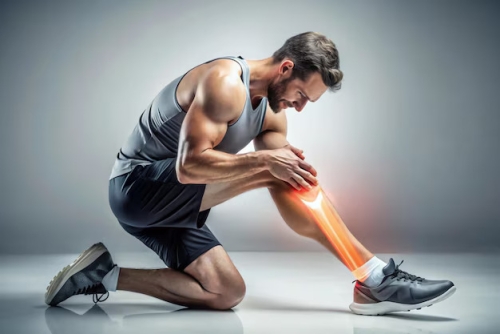Knee arthritis is a common condition among seniors, often leading to pain, stiffness, and reduced mobility. While it can be challenging to stay active, incorporating safe and effective exercises into your routine can help alleviate symptoms, improve strength, and enhance overall quality of life. This blog will explore some beneficial exercises specifically tailored for seniors with knee arthritis.
Understanding Knee Arthritis
knee arthritis exercises occurs when the cartilage cushioning the knee joint deteriorates, leading to pain and inflammation. Common types include osteoarthritis and rheumatoid arthritis. Symptoms may vary, but typical signs include:
Joint pain and stiffness
Swelling around the knee
Reduced range of motion
A feeling of warmth around the joint
While it’s essential to consult with a healthcare provider before starting any new exercise program, many seniors can benefit from gentle, low-impact activities that help maintain joint function and reduce discomfort.
Benefits of Exercise for Knee Arthritis
Engaging in regular exercise offers several advantages for seniors with knee arthritis, including:
Pain Relief: Movement can stimulate the production of synovial fluid, which lubricates the joints and reduces pain.
Improved Strength: Strengthening the muscles around the knee can provide better support and stability, easing the burden on the joint.
Enhanced Flexibility: Stretching and range-of-motion exercises help maintain flexibility and reduce stiffness.
Better Balance: Balance exercises can prevent falls, which is particularly important for seniors.
Mood Improvement: Physical activity releases endorphins, which can enhance mood and overall well-being.
Safe and Effective Exercises
Here are some safe exercises that seniors can perform to help manage knee arthritis. Always start with a warm-up to prepare your muscles and joints.
1. Warm-Up
Before any exercise, warming up is crucial. Try gentle movements such as:
Marching in Place: Stand tall and march in place for 2–5 minutes to get your blood flowing.
Ankle Circles: While seated or standing, lift one foot and rotate your ankle in circles. Repeat with the other foot.
2. Range of Motion Exercises
These exercises help improve flexibility and reduce stiffness.
Heel Slides: Sit or lie down with your legs extended. Slowly slide your heel toward your buttocks, bending your knee. Hold for a few seconds, then slide back to the starting position. Repeat 10 times.
Knee Extension: Sit on a chair with your feet flat on the ground. Slowly extend one leg in front of you until it’s straight, then lower it back down. Repeat 10–15 times for each leg.
3. Strengthening Exercises
Building strength in the muscles around the knee can help support the joint.
Chair Stand: Sit on the edge of a sturdy chair. With your feet flat on the floor, push through your heels to stand up, then sit back down. Aim for 10–15 repetitions.
Wall Sits: Stand with your back against a wall and slide down into a sitting position (as if sitting on an invisible chair). Hold for 10–30 seconds, then stand back up. Repeat 3–5 times.
4. Balance Exercises
Improving balance can help prevent falls and enhance stability.
Single Leg Stand: While holding onto a sturdy surface for support, lift one foot off the ground and balance on the other leg. Hold for 10–15 seconds, then switch legs. Repeat 3 times on each side.
Tightrope Walk: Imagine walking on a tightrope. Place one foot directly in front of the other and walk in a straight line for about 10 steps, then turn around and repeat.
5. Low-Impact Aerobic Exercises
Incorporating aerobic exercises can help improve cardiovascular health without putting too much stress on the knees.
Walking: Simple and effective, walking is one of the best forms of exercise for seniors. Aim for 10–30 minutes a day at a pace that feels comfortable. You can break this into shorter segments if needed.
Swimming or Water Aerobics: Water exercises are excellent for seniors with arthritis because the buoyancy reduces stress on the joints. Join a local class or swim laps at a pool.
6. Stretching Exercises
Stretching helps improve flexibility and can ease tension in the muscles around the knee.
Quadriceps Stretch: Stand next to a wall or chair for support. Bend one knee and bring your heel toward your buttocks. Grab your ankle and hold for 15–30 seconds. Switch legs and repeat.
Hamstring Stretch: Sit on the edge of a chair with one leg extended straight in front. Reach toward your toes while keeping your back straight. Hold for 15–30 seconds, then switch legs.
Tips for Safe Exercising
Listen to Your Body: Pay attention to how your body feels during exercises. If you experience pain (beyond mild discomfort), stop the activity.
Stay Hydrated: Drink plenty of water before, during, and after exercising.
Wear Supportive Shoes: Choose comfortable, supportive footwear to provide stability and reduce the risk of injury.
Consult a Professional: If you’re unsure about which exercises are right for you, consider working with a physical therapist who can design a personalized program.
Be Consistent: Aim to exercise regularly, ideally most days of the week. Even short sessions can make a difference over time.
Conclusion
Knee arthritis doesn’t have to limit your mobility or quality of life. By incorporating safe and effective exercises into your routine, you can manage symptoms, improve strength, and maintain an active lifestyle. Always consult with your healthcare provider before starting any new exercise program, and remember to listen to your body. With dedication and the right approach, you can stay active and enjoy life to the fullest, even with knee arthritis.
Business Name - Reed Elite Training | Exercise Specialist
Address - 22840 NE 8th Street Unit 106 Sammamish, WA 98074 United States
Phone - +1 425-407-3135
Website - https://reedelitetraining.com












